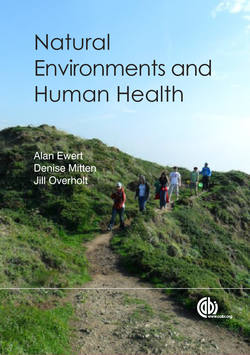Читать книгу Natural Environments and Human Health - Alan W Ewert - Страница 16
На сайте Литреса книга снята с продажи.
What does Connected Mean? Are We Connected to Nature?
ОглавлениеConnected means that we are attached or united, we are joined; we are related as in family ties. In a state of connection there is a link or a bond; there is cause and effect. We are connected to nature; meaning that we are in relationship with other living beings and these relationships impact our social, psychological, spiritual, and biological selves, which in turn impact our health and well-being. Early humans were well-connected and interwoven with nature, co-evolving for millennia.
Our social and physical environments influence our perceptions. Therefore, daily interactions and close dependence on nature influenced perceptions of early humans as they lived lives intertwined with natural patterns such as solar and lunar cycles, salmon spawning cycles, whale and bird migrations, insect activity, and berry ripening. Most likely this reliance and close relationship offered many positive health and developmental benefits while also presenting hardship and challenge. Evidence of this relationship is depicted in 40,000-year-old cave paintings in areas such as Chauvet in southern France and Ulm, Germany, where horses are drawn with great perspective and accuracy. Archeologists interpret the drawings to represent a close connection to these animals in spiritual and physical ways. Prior to discovery of the cave paintings this sort of relationship with animals was believed to have developed much later in human evolution. Some societies continue to live in close contact with nature, even to the extent that they mimic the behavior of animals and plants—a practice that science now knows as biomimicry. McGregor (2010) talks about the Evenk or Reindeer people from the Siberian taiga in northern Russia who mirror reindeer behavior, historically following the migrations and relying on them for most of their needs including their shamanic spiritual and healing tradition. They believe that their soul connection to the reindeer allows them to ‘see the future, understand the unknowable, heal individuals, and advise the entire community’ (p. 13). They think of this as Bayanay or an all-knowing, all-feeling spirit, or a shared consciousness (Vitebsky, 2005; Klokov, 2007) that gives them a sense of belonging to a world larger than themselves. Originally coastal dwellers, the Evenk combine pastoralism (reindeer and horses) with fishing, hunting, and gathering; they were able to migrate into the more mountainous taiga region only because of their mutualistic relationship with the reindeer as pack animals. Today the destruction of the pasture land severely limits the reindeer herding, though local officials and Evenk are trying to revitalize their pastoral lifestyle. This disruption in connection to their natural environment has negative physical, mental, and spiritual health consequences for the Evenk people.
Human behaviors influence nature, further demonstrating our connection. A mutualistic relationship between the Evenk people and reindeer is evidenced in the behavior of herds used by the people for milk and packing burdens (though not for meat). These herds now naturally stay close by due to protection people offer from predators and by smudging biting insects.
Of course, not all human influence on animal behavior is positive or mutualistic. In the past century as human technology developed and wildlife habitat decreased, hunting pressure increased, resulting in changed animal behavior. Bears under hunting pressure now avoid hunters by shifting activity from day to night (Miller, 2012). This behavior change lessens an individual bear’s chance of being killed; however, the bear population as a whole is more vulnerable to starvation. Hunting season begins in late August and ends in late October, coinciding with the bears’ need to eat copious amount of berries and accumulate fat storage for winter. Daytime eating is more efficient for bears and the cost of not having enough fat stored for hibernation is low birth rates and death (Ordiz et al., 2012). Hunters’ use of deer feeding stations has also shifted deer activity from day to night to avoid hunting pressure.
Hunting is a connection with nature that humans have had since ancestral times. Many cultures exhibit emotional and spiritual ties with the animals they hunt. The Zunis people do not destroy the bones of animals they kill as an act of honoring the animal (Earhart, 2001). Swan (1992) asserts that hunting is a close relationship with the hunted animal. He cites examples of American Indian, Inuit, and West African conceptions of the willingness of animals to be killed and the misconception that hunting exhibits dominance over animals. In this systems way of thinking, an animal consents to be taken and a power greater than both animals and humans allows each to survive.
The previous examples illustrate evolutionary and social connections with the natural world; these interwoven relationships can be explained by systems theory, defined in Chapter 1. The following sections offer additional examples that demonstrate specific areas of connection.
